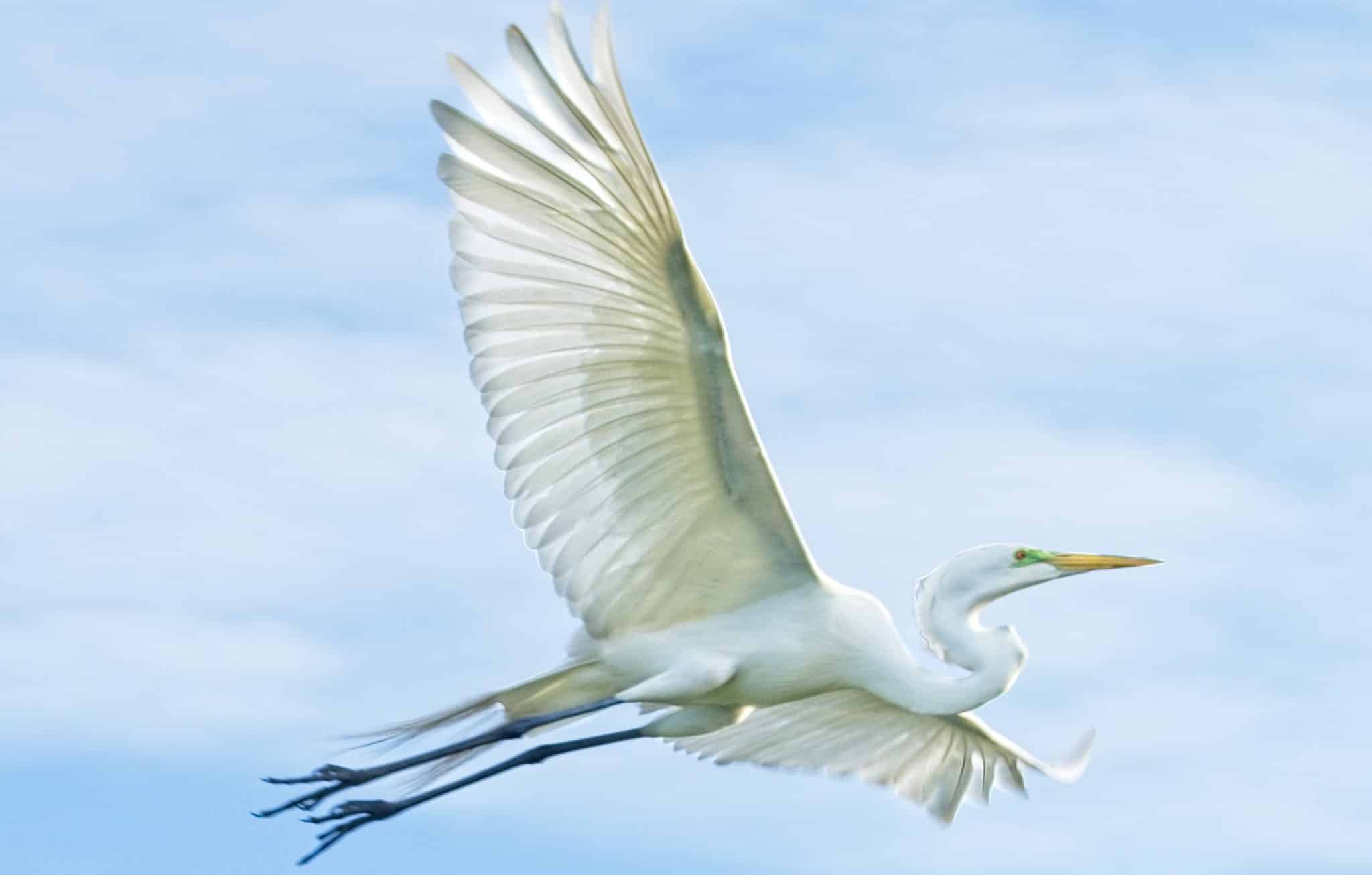explore
Nature
Kiawah River Wildlife: Great Egrets
One of Kiawah River’s most recognizable birds is the Great Egret. They’re easy to spot, with their long, S-curved necks and bright white plumage. You’ll find them in both saltwater and freshwater habitats, usually stalking prey in shallow waters like the marshes and estuaries that make up the sea islands.
Egrets are herons, generally long-legged wading birds, that have white or buff plumage, developing fine plumes during the breeding season. There are a couple of different types of egrets in the Lowcountry, but the Great Egret (Ardea alba) is probably the most predominant. Slightly smaller and more svelte than the Great Blue Heron, they stand about 40 inches tall and have a wingspan of almost five feet. Their size alone distinguishes them from the smaller Snowy Egret, but you can also tell the difference by looking at their legs and bills—Great Egrets have all black legs and yellowish-orange bills, while Snowy Egrets have black legs with yellow feet, and a black bill.
They are easily identifiable in flight, as they fly with their long necks tucked in and legs trailing behind. This is characteristic of herons and differentiates them from other large wading birds such as Spoonbills and ibises who fly with their necks extended.
You’ve probably spotted Great Egrets in the marsh, standing completely still for long stretches of time. They’re stalking their prey—most likely fish but also frogs, snakes, and crustaceans—and when one crosses its path, the Egret will thrust out its beak at lightning speed to spear it and swallow it whole. They favor wetlands, ponds, tidal flats, and other slow-moving bodies of water that allow them to hunt in this stalking manner.
Egrets nest in and around these same waterways. Their nests are platform-like structures comprised of sticks, and are generally very high up in trees, often on an island away from predators such as raccoons. Great Egrets are colonial nesters, meaning they make their nests in mixed colonies along with similar birds, like Anhingas, Cormorants and Blue Herons. These groupings of nests are called rookeries, and when you spot one filled with its residents, it is quite a sight to see!
Though prevalent now, Egrets were nearly rendered extinct in the late 1800s. They were hunted for the long plumes that grow from their back during breeding season. Called aigrettes, these delicate and feathery plumes adorned ladies’ hats and could be sold for as much as $32 per ounce. That’s twice the price of gold at the time! Conservationists sprang into action, putting an end to the slaughter of Egrets and prompting one of the first laws in the United Stated to protect birds. As a result, the Great Egret became the symbol for the National Audobon Society.
You’d never know by the number of Egrets you see at Kiawah River now that they were once such a threatened bird. Take a few extra minutes to appreciate them when you catch a glimpse of them in our marshes and ponds!

